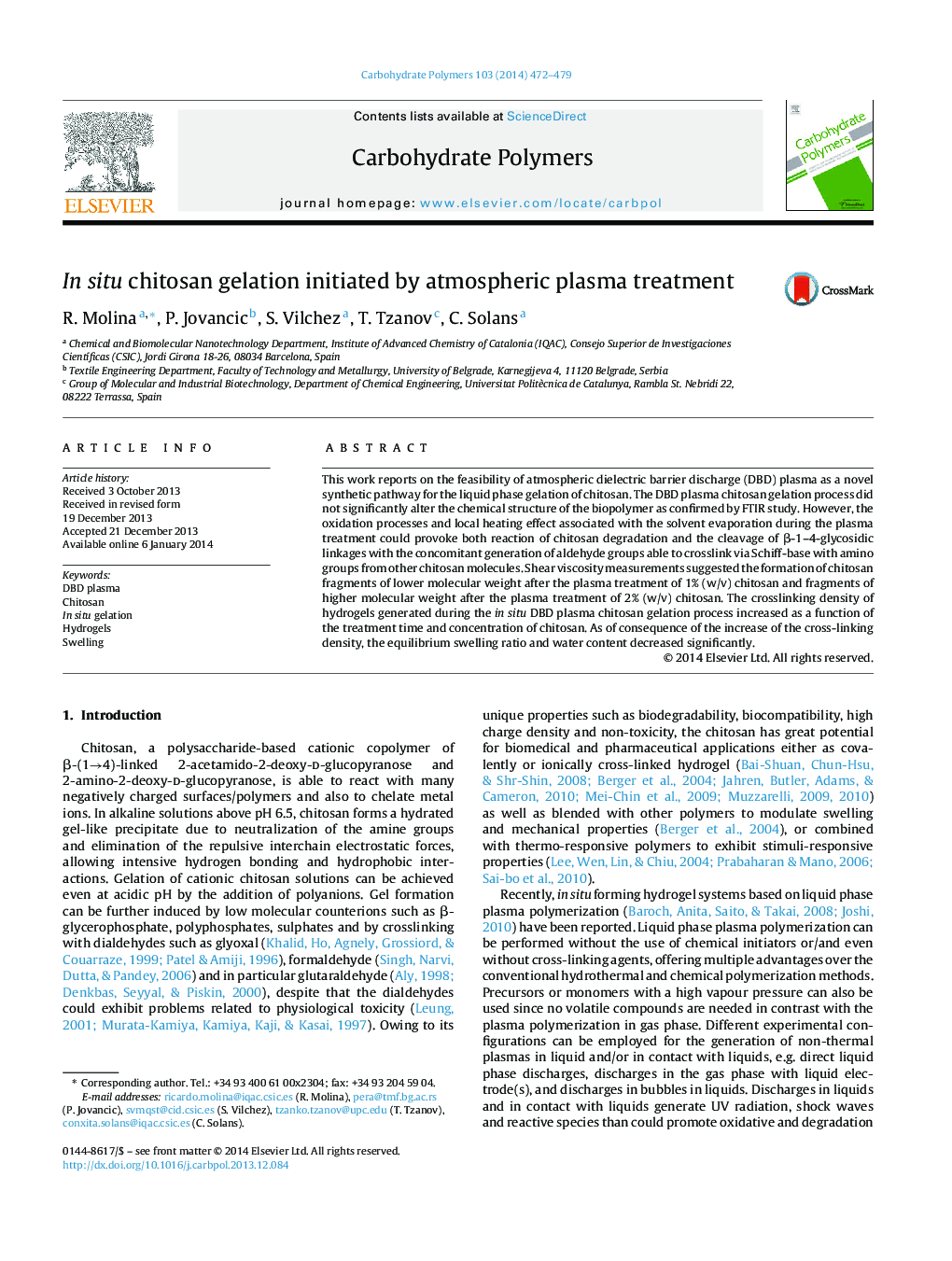| Article ID | Journal | Published Year | Pages | File Type |
|---|---|---|---|---|
| 7792445 | Carbohydrate Polymers | 2014 | 8 Pages |
Abstract
This work reports on the feasibility of atmospheric dielectric barrier discharge (DBD) plasma as a novel synthetic pathway for the liquid phase gelation of chitosan. The DBD plasma chitosan gelation process did not significantly alter the chemical structure of the biopolymer as confirmed by FTIR study. However, the oxidation processes and local heating effect associated with the solvent evaporation during the plasma treatment could provoke both reaction of chitosan degradation and the cleavage of β-1-4-glycosidic linkages with the concomitant generation of aldehyde groups able to crosslink via Schiff-base with amino groups from other chitosan molecules. Shear viscosity measurements suggested the formation of chitosan fragments of lower molecular weight after the plasma treatment of 1% (w/v) chitosan and fragments of higher molecular weight after the plasma treatment of 2% (w/v) chitosan. The crosslinking density of hydrogels generated during the in situ DBD plasma chitosan gelation process increased as a function of the treatment time and concentration of chitosan. As of consequence of the increase of the cross-linking density, the equilibrium swelling ratio and water content decreased significantly.
Related Topics
Physical Sciences and Engineering
Chemistry
Organic Chemistry
Authors
R. Molina, P. Jovancic, S. Vilchez, T. Tzanov, C. Solans,
